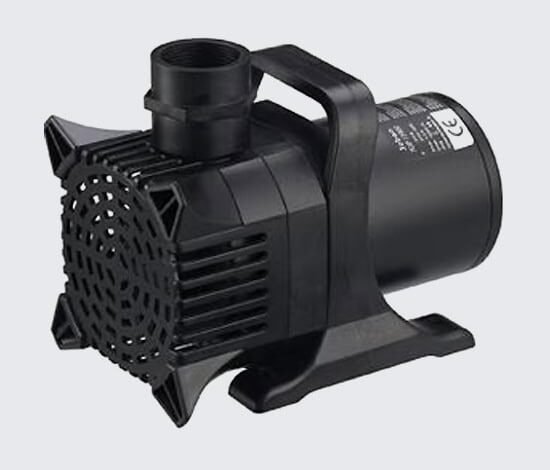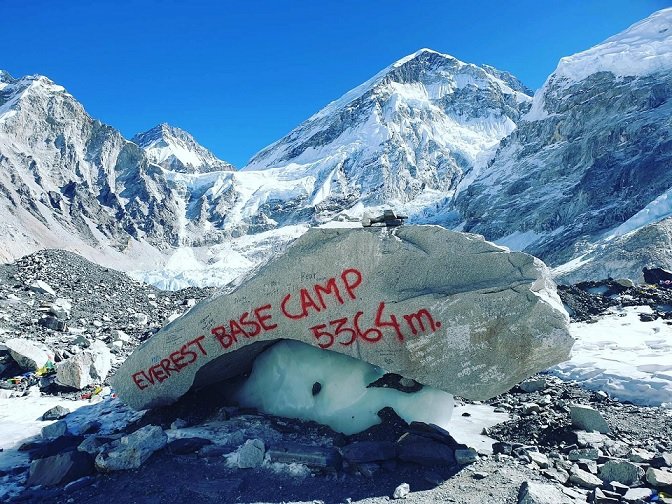Essential Tips for the Annapurna Circuit Trek

Embarking on the Annapurna Circuit Trek is an exhilarating adventure that demands preparation, awareness, and adaptability. To make the most of this iconic journey through the Himalayas, it is crucial to be well-informed and prepared for the challenges and rewards that lie ahead.
First and foremost, understanding the altitude and acclimatization process is essential. The Annapurna Circuit reaches an elevation of 5,416 meters at Thorong La Pass, and the risk of altitude sickness is a real concern. To mitigate this risk, it’s important to ascend gradually, allowing your body time to adjust to decreasing oxygen levels. Planning rest days and staying hydrated are key strategies for acclimatization. Listening to your body and recognizing symptoms of altitude sickness, such as headaches and nausea, can prevent more serious issues and ensure a safer trek.
Packing appropriately for the Annapurna Circuit Climb is another vital aspect of preparation. The weather can vary significantly, so it’s important to bring layered clothing that can adapt to changing conditions. A good-quality sleeping bag rated for cold temperatures, sturdy trekking boots, and a durable backpack are essential for comfort and safety. Trekking poles can be beneficial for stability on uneven terrain and steep ascents. Additionally, packing light while ensuring you have necessary items such as a first aid kit, water purification tablets, and personal medications will help you stay prepared for any situation.
Permits and regulations must be carefully managed before setting out. Trekkers are required to obtain the Annapurna Conservation Area Permit (ACAP) and the Trekkers’ Information Management System (TIMS) card. These documents ensure that you are permitted to enter and trek in the conservation area and help manage your safety and security throughout the journey. Acquiring these permits in advance from Kathmandu or Pokhara will streamline your trek and avoid unnecessary delays.
Navigating the trek’s infrastructure and local culture adds another layer of richness to the experience. The well-established network of teahouses and lodges provides essential amenities and a chance to interact with local communities. Embracing local customs, such as removing your shoes before entering homes or teahouses, and participating in cultural practices can enhance your journey and foster meaningful connections with the people you meet.
Safety is paramount throughout the trek. Regularly checking weather conditions, especially when crossing high-altitude passes, can prevent hazardous situations. It’s also wise to inform someone of your trekking itinerary and expected return date for added security. Hiring a local guide or porter can significantly enhance your experience, providing valuable assistance with navigation, local knowledge, and support with carrying gear.
Finally, approach the trek with an open mind and a spirit of adaptability. The Annapurna Circuit offers an array of challenges and delights, from rugged trails and high-altitude ascents to serene landscapes and vibrant cultural encounters. By preparing thoroughly, respecting the environment and local traditions, and maintaining a flexible attitude, you can fully embrace the adventure and create lasting memories of this remarkable Himalayan journey.
Pre-Trek Preparation
Effective pre-trek preparation is crucial for a successful Annapurna Circuit adventure. Begin by researching the trek thoroughly, understanding its length, challenges, and seasonal conditions. Planning your itinerary, including rest days for acclimatization, is essential to manage the physical demands and enhance your experience. Physical conditioning plays a significant role; engage in regular cardiovascular and strength-training exercises to build endurance and stamina. A fitness routine that includes hiking or trekking practice, ideally with a loaded backpack, will better prepare you for the trek’s diverse terrain. Additionally, familiarize yourself with the necessary permits, such as the Annapurna Conservation Area Permit (ACAP) and the Trekkers’ Information Management System (TIMS) card, which need to be obtained prior to the trek. Ensuring that all travel documents, including insurance coverage, are in order will help you handle emergencies effectively. Creating a comprehensive packing list, which includes essential items such as a first aid kit, water purification tablets, and personal medications, is also vital. Reviewing safety guidelines, weather patterns, and local customs will further enhance your preparedness. Pre-trek preparation sets the foundation for a smooth and enjoyable journey, allowing you to fully immerse yourself in the adventure.
Choosing the Right Gear
Selecting the right gear for the 14 Days Annapurna Circuit trek is essential for comfort, safety, and overall enjoyment. Start with trekking boots; opt for high-quality, well-fitted boots with ankle support and good grip to handle diverse and rugged terrain. Layered clothing is crucial due to the varying weather conditions. Pack moisture-wicking base layers, an insulating mid-layer, and a waterproof outer layer to stay dry and comfortable. A sleeping bag rated for cold temperatures is necessary for the chilly nights at higher altitudes. Trekking poles can provide stability on uneven paths and steep inclines. A durable, lightweight backpack with adequate capacity will help you carry your gear efficiently. Other essentials include a headlamp or flashlight with extra batteries, a first aid kit, and water purification methods like tablets or filters. Personal items such as sun protection (hat, sunglasses, sunscreen) and a multi-tool or knife can also be useful. Ensure that all gear is tested before the trek to avoid any surprises on the trail. Proper gear selection not only enhances your trekking experience but also ensures you are prepared for the various conditions encountered on the Annapurna Circuit.
Acclimatization Strategies
Acclimatization is a key component of trekking at high altitudes, such as on the Annapurna Circuit. To prevent altitude sickness and ensure a safe trek, gradual acclimatization is crucial. Ascend slowly to give your body time to adjust to lower oxygen levels. Incorporate rest days into your itinerary, particularly at key elevations like Manang, where you can spend an extra day to acclimate. This practice, known as “climb high, sleep low,” involves hiking to a higher altitude during the day and returning to a lower altitude to sleep. Stay hydrated by drinking plenty of water, as dehydration can exacerbate altitude sickness symptoms. Eating a balanced diet with high carbohydrate content helps provide the energy needed for acclimatization. Avoid alcohol and smoking, as they can hinder the acclimatization process. Monitor your health regularly and be aware of symptoms like headaches, nausea, and dizziness. If symptoms of altitude sickness appear, it is important to stop ascending and seek medical attention if necessary. By following these strategies, you can enhance your body’s acclimatization and increase your chances of successfully completing the Annapurna Circuit.
Navigating the Route
Navigating the Annapurna Circuit requires careful planning and attention to detail due to the trek’s diverse and sometimes challenging terrain. The route is well-marked, but it’s still essential to carry a reliable map or GPS device. Start by familiarizing yourself with the trek’s key sections and landmarks, including major villages, checkpoints, and high-altitude passes like Thorong La. Using local guides or porters can greatly assist with navigation and provide valuable insights into the trail. Ensure that you follow the marked paths and adhere to trail signs to avoid getting lost or straying into restricted areas. Pay attention to local weather conditions, as they can affect trail conditions and visibility. Carrying sufficient supplies, including food, water, and a first aid kit, is important in case of unforeseen delays or emergencies. Be prepared for the possibility of changes in trail conditions due to weather or other factors. Staying informed about current trail conditions through local sources or trekking forums can provide up-to-date information and help you navigate effectively. By preparing thoroughly and staying vigilant, you can successfully navigate the Annapurna Circuit and enjoy a rewarding trekking experience.
Understanding Altitude Sickness
Altitude sickness, also known as acute mountain sickness (AMS), is a common concern for trekkers on high-altitude routes like the Annapurna Circuit. It occurs when the body struggles to adapt to lower oxygen levels at high elevations. Symptoms typically include headaches, nausea, dizziness, and shortness of breath. To mitigate the risk, gradual acclimatization is essential. Ascend slowly, allowing your body time to adjust, and incorporate rest days to aid this process. Stay well-hydrated and eat a high-carbohydrate diet to support your energy needs. It’s important to recognize the symptoms early and take immediate action if they arise. If you experience mild symptoms, rest and avoid further ascent until you feel better. For more severe symptoms, descending to a lower altitude is crucial to prevent serious complications, such as high-altitude pulmonary or cerebral edema. Always be aware of your condition and that of your fellow trekkers. Carrying medications like acetazolamide can help alleviate symptoms, but they should be used in conjunction with proper acclimatization strategies. Understanding altitude sickness and preparing adequately can help ensure a safe and enjoyable trekking experience on the Annapurna Circuit.
Packing Essentials
Packing the right gear is crucial for a successful Annapurna Circuit trek 15 Days, given the diverse and challenging conditions you’ll encounter. Begin with a sturdy, well-fitting pair of trekking boots, which are essential for navigating the varied terrain, from rocky paths to steep inclines. Layered clothing is important to adapt to the changing weather, so include moisture-wicking base layers, insulating mid-layers, and a waterproof outer layer. A high-quality sleeping bag rated for cold temperatures is necessary for the cold nights at higher elevations. Trekking poles are highly recommended for stability and reducing strain on your knees during steep sections. A durable backpack with adequate capacity will carry your essentials comfortably. Don’t forget a good headlamp or flashlight with extra batteries, as well as a multi-tool for any unforeseen needs. Other packing essentials include a first aid kit, water purification tablets or filters, sun protection items such as sunscreen, sunglasses, and a hat, and a power bank to keep your devices charged. Personal items like a camera and travel documents are also important. Test all gear before the trek to ensure it is functional and comfortable. Proper packing not only enhances your trekking experience but also ensures you are prepared for the variable conditions along the Annapurna Circuit.
Meal Planning and Nutrition
Proper meal planning and nutrition are vital for maintaining energy and health during the Annapurna Circuit trek. Meals along the trail are typically provided by teahouses and lodges, offering a range of local and international dishes. For a balanced diet, focus on high-carbohydrate foods such as rice, pasta, and potatoes, which provide sustained energy for long trekking days. Incorporate protein sources like dal (lentils), meat, or tofu to support muscle repair and recovery. Fruits and vegetables are important for vitamins and minerals, though they may be less abundant at higher altitudes. In addition to regular meals, carry high-energy snacks such as nuts, dried fruit, and energy bars to keep your energy levels up between meals. Staying hydrated is equally important; drink plenty of water and consider using purification tablets or a filter to ensure water safety. Avoid alcohol and excessive caffeine, as they can contribute to dehydration. If you have dietary restrictions or preferences, communicate them in advance to ensure the teahouses can accommodate your needs. Proper meal planning and nutrition will help you stay energized and healthy throughout your trek, enhancing your overall experience on the Annapurna Circuit.
Cultural Etiquette
Respecting local cultural etiquette is essential for a positive and respectful experience on the Annapurna Circuit. The trek passes through various villages inhabited by ethnic groups like the Gurung, Magar, and Thakali, each with its own traditions and customs. When visiting homes or teahouses, it’s customary to remove your shoes before entering, as a sign of respect. Greeting people with a polite “Namaste” with joined hands is a common and respectful way to acknowledge locals. It’s important to dress modestly, covering shoulders and knees, especially when visiting religious sites or local homes. Photography should be done respectfully; always ask permission before taking photos of individuals or sacred places. Showing respect for local customs, such as participating in traditional ceremonies or festivals if invited, can enhance your cultural experience. Additionally, avoid discussing sensitive topics and be mindful of local practices, such as not pointing feet at religious objects. By adhering to these cultural norms, you will foster positive interactions and contribute to a respectful and enjoyable trekking experience on the Annapurna Circuit.
Communication and Connectivity
Communication and connectivity on the Annapurna Circuit Trekking can be limited, but there are ways to stay in touch with the outside world. Mobile phone coverage is available in most of the populated areas along the circuit, though signal strength may vary. Purchasing a local SIM card with a data plan upon arrival in Nepal can help you stay connected for calls, texts, and internet access. Some teahouses and lodges offer Wi-Fi, though it can be slow and intermittent, especially in more remote areas. For more reliable communication, consider carrying a satellite phone or a personal locator beacon, especially if trekking in more isolated regions or for emergency situations. Additionally, trekking agencies often provide communication services as part of their support packages. It’s wise to inform family and friends of your trekking itinerary and expected communication times. While connectivity might be limited in some high-altitude sections, planning ahead for essential communication needs ensures you can stay in touch and manage any necessary updates throughout your trek.
Hiring Guides and Porters
Hiring guides and porters for the Annapurna Circuit trek can significantly enhance your trekking experience, providing both practical support and local expertise. Guides offer valuable knowledge about the route, local culture, and safety, helping to navigate the diverse terrain and manage any challenges that arise. They can also facilitate interactions with local communities and provide insights into the region’s history and traditions. Porters, on the other hand, carry your heavy gear, allowing you to trek with a lighter load and focus on the journey itself. This not only makes the trek more enjoyable but also supports local livelihoods. When hiring guides and porters, choose reputable trekking agencies or organizations that adhere to fair labor practices and provide proper training and equipment. Ensure that you clearly communicate your needs and expectations, including the duration of the trek, specific requirements, and any preferences for your support team. Properly briefing your guide and porter on your itinerary and any special needs will help them provide the best possible assistance. By employing guides and porters, you contribute to a smoother, more enjoyable trek while also supporting the local economy and ensuring a well-rounded adventure on the Annapurna Circuit.
Health and Safety Precautions
Health and safety are paramount when trekking the Annapurna Circuit, a journey that involves high altitudes, varied terrain, and remote locations. Ensuring you are in good physical health before the trek is the first step. Engage in regular cardiovascular and strength-training exercises to build endurance and prepare your body for the trek’s demands. During the trek, staying hydrated and eating a balanced diet is crucial for maintaining energy and preventing altitude sickness. Be aware of symptoms of altitude sickness, such as headaches, dizziness, and nausea, and acclimatize gradually by including rest days in your itinerary. Carry a well-stocked first aid kit with essential medications for common ailments and injuries. It’s also important to have comprehensive travel insurance that covers trekking at high altitudes. Familiarize yourself with emergency procedures and the locations of the nearest medical facilities. Weather conditions can be unpredictable, so always check forecasts and be prepared for sudden changes. Inform someone about your trekking plans and expected return date for added safety. By adhering to these health and safety precautions, you can minimize risks and ensure a safer, more enjoyable trekking experience on the Annapurna Circuit.
Managing Finances and Budget
Managing finances and budgeting effectively is essential for a smooth Annapurna Circuit trek. Start by estimating the total cost of the trek, including permits, transportation, accommodation, food, and additional expenses such as tips for guides and porters. Permits like the Annapurna Conservation Area Permit (ACAP) and the Trekkers’ Information Management System (TIMS) card are essential and should be factored into your budget. Accommodation and meals along the trek are generally affordable, but prices can increase at higher altitudes and during peak trekking seasons. Plan for daily expenses, including tips for staff and any unexpected costs. It’s advisable to carry a mix of cash in Nepalese rupees, as ATMs may be limited in remote areas, and credit card use is often restricted to larger towns. Having some extra funds for emergencies or unplanned expenses is also wise. Additionally, budgeting for travel insurance and potential medical costs will provide peace of mind. By carefully managing your finances and budgeting for all aspects of the trek, you can ensure a more organized and stress-free adventure on the Annapurna Circuit.
Environmental Responsibility
Environmental responsibility is crucial for preserving the natural beauty and ecological integrity of the Annapurna Circuit. As a trekker, it is important to follow Leave No Trace principles by minimizing your environmental impact. Always pack out all trash, including biodegradable waste, as waste management facilities can be limited in remote areas. Use eco-friendly products and avoid single-use plastics. Respect wildlife by observing from a distance and not disturbing their natural habitats. Stick to established trails to prevent soil erosion and protect vegetation. In lodges and teahouses, be mindful of water usage and energy consumption. Participating in local conservation initiatives, such as donating to local environmental groups or supporting community-based conservation projects, can also make a positive impact. By practicing environmental responsibility, you contribute to the preservation of the Annapurna region’s natural beauty and ensure that future trekkers can enjoy the same pristine landscapes that you experience.
Local Customs and Traditions
Understanding and respecting local customs and traditions enriches your experience on the Annapurna Circuit and fosters positive interactions with the local communities. The trek passes through various ethnic villages, including the Gurung, Magar, and Thakali peoples, each with its unique cultural practices. When visiting homes or religious sites, it’s customary to remove your shoes before entering. Greeting locals with a polite “Namaste,” where you press your palms together, is a respectful way to acknowledge them. Dress modestly, covering shoulders and knees, especially in religious or cultural settings. Photography should be approached with sensitivity; always ask for permission before taking photos of people or sacred objects. Engaging in local festivals or ceremonies, if invited, offers a deeper cultural immersion. Be aware of and adhere to local customs, such as proper behavior during religious rituals or ceremonies. Respect for local traditions and practices not only enriches your trekking experience but also demonstrates cultural sensitivity and fosters goodwill with the communities you encounter along the trail.
Post-Trek Reflections and Experiences
Reflecting on your post-trek experiences from the Short Annapurna Circuit Trek provides an opportunity to appreciate the journey and its impact. After completing the trek, take time to review and process the adventure, considering both the challenges faced and the triumphs achieved. Reflecting on the physical and emotional aspects of the trek can provide valuable insights into personal growth and resilience. Sharing your experiences with fellow trekkers, friends, and family can be a rewarding way to recount the highlights of your journey, from the breathtaking landscapes and cultural encounters to the camaraderie with fellow trekkers. Documenting your experience through a journal, photos, or blog posts can help preserve memories and insights gained during the trek. Additionally, consider how the experience has influenced your perspective on travel, adventure, and environmental responsibility. Engaging in post-trek activities such as reconnecting with local communities through volunteer work or supporting conservation efforts can be a meaningful way to give back and continue contributing positively. By reflecting on and sharing your Annapurna Circuit experience, you honor the journey and its impact on your life.













